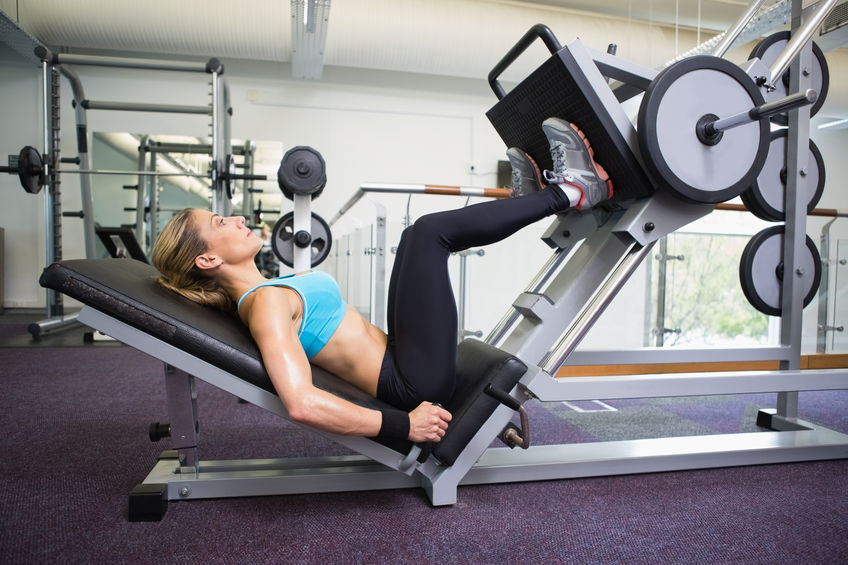The leg press exercise is a favored one for beginning lifters, given the ease of moving a lot of weight with minimal risk. Still, there are tips and considerations to take into account for a safe movement.
Emphasis
The primary muscles stressed in this movement are the muscles in your upper leg (quads, hamstrings, buttocks). The secondary muscles stressed are your stomach muscles and lower back.
Leg Press Starting Position
Sit in the seat with your back against the seat and your feet up against the platform. Push the platform up until your legs are straight. Never lock out your knees in this position, i.e., allow your joint to hold you up without engaging your muscles. Flip out the outside handles and hold on to the inside handles.

Movement
Take two to three seconds to lower the platform until your shin is parallel to the floor (or just past parallel). Press the platform back up to the starting position. Squeeze your abdominals, quadricpes and glutes hard before repeating the exercise.
Training Tips
- Contract your abdominals throughout the entire movement. This will help support your lower back.
- Do not let your hip/buttocks lift up off the seat. This will increase the stress placed on the lower back.
- If there are two sections of the platform that can be used – upper and lower, the lower level is generally used for evenly distributed emphasis. The upper level can be used for individuals with knee problems and for placing more emphasis on the legs over the glutes.
Leg Press Variations
There are three stances that can be used for this exercise:
- Close Stance – The feet are placed one to two inches apart. Concentration is on the Vastus Lateralis (outer thigh).
- Medium Stance – The feet are placed shoulder width apart. Concentration is on the entire quad, hamstrings, and glutes.
- Wide Stance – The feet are placed just outside the width of the shoulders. Concentration is on the Vastus Medialis (inner thigh).
Warning Tips
- Never lower the weight down to a point where your hips raise up off the floor. This can cause serious injury to your lower back.
- Do not lower the weight any faster than two to three seconds. You must be in control at all times. The faster you perform this movement, the less control you will have which in turn will increase your risk of injury.


